2017 Kia Sportage: Car Seat Check

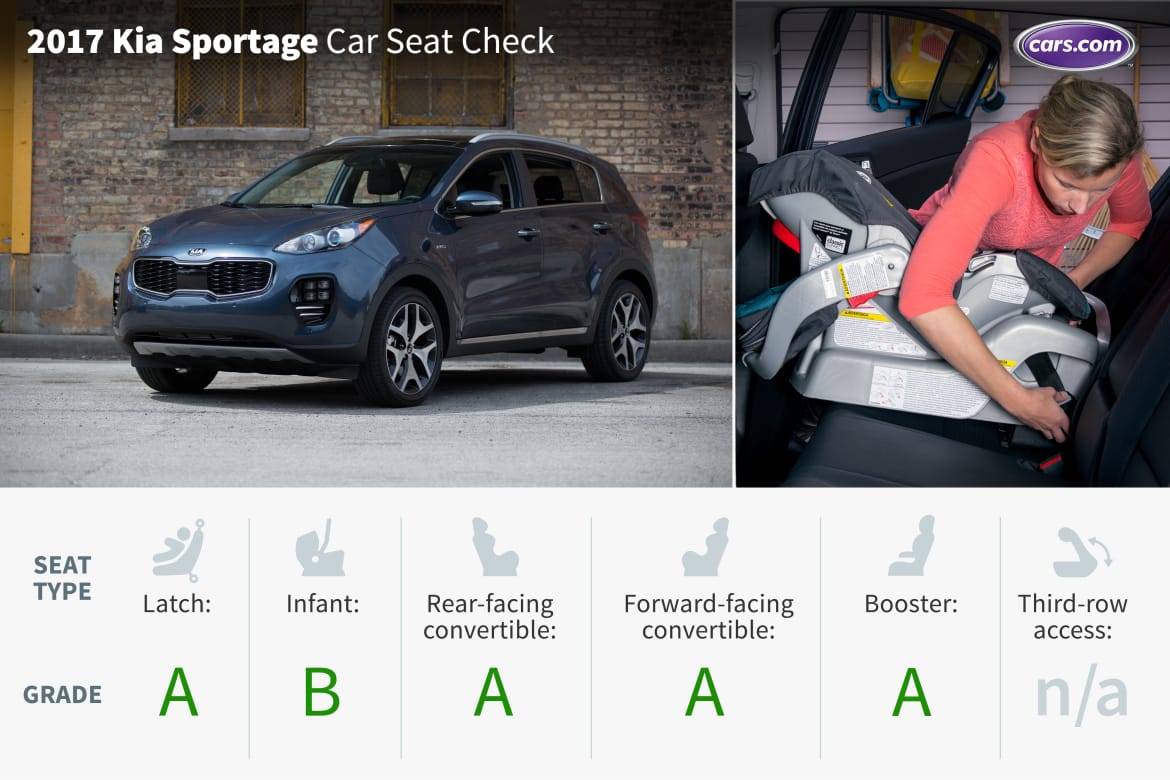
CARS.COM — Like Hyundai’s redesigned-for-2016 Tucson, its Kia sibling got a similar treatment. The 2017 Sportage is redesigned with a new look befitting its name, along with upgraded interior materials and a bit more rear legroom this year. Thanks to ample space and accessible Latch anchors, installing two child-safety seats was easy.
How many car seats fit in the second row? Two
What We Like
- The two sets of Latch anchors sit just within the seat bight. Although the Sportage’s seat cushions were stiff, only a small amount of effort was needed to push past them to connect to the lower Latch anchors. The seatback reclines a bit, making connection easier.
- The three tether anchors are found halfway down the seatbacks and are clearly marked and easy to access.
- In both forward- and rear-facing modes, the convertible went in easily and fit well. In rear-facing mode, the front passenger had enough legroom to sit comfortably.
- The booster fit well and we did not need to move the head restraint. The buckles are on short but stable stalks, making them easier for kids to grasp.
What We Don’t
- Although the rear-facing infant seat installed without incident, we had to move the front passenger seat forward to make room. The 5-foot-6 passenger needed a bit more legroom to be comfortable.
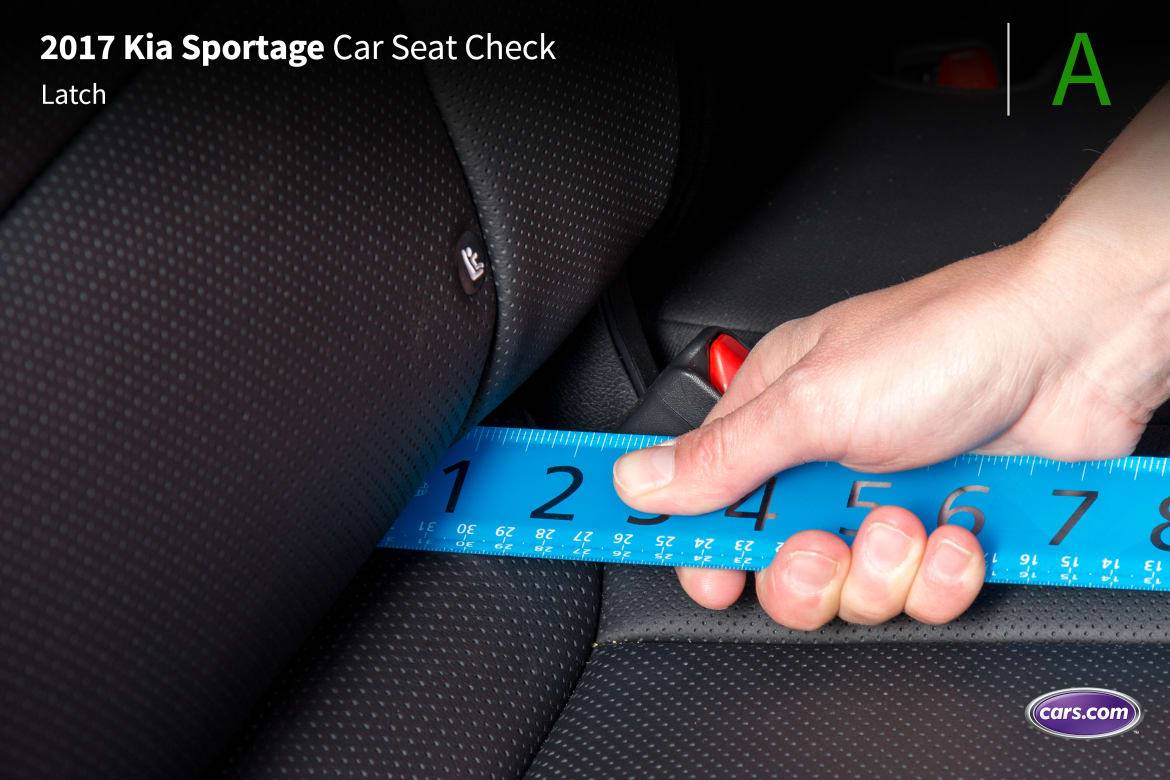
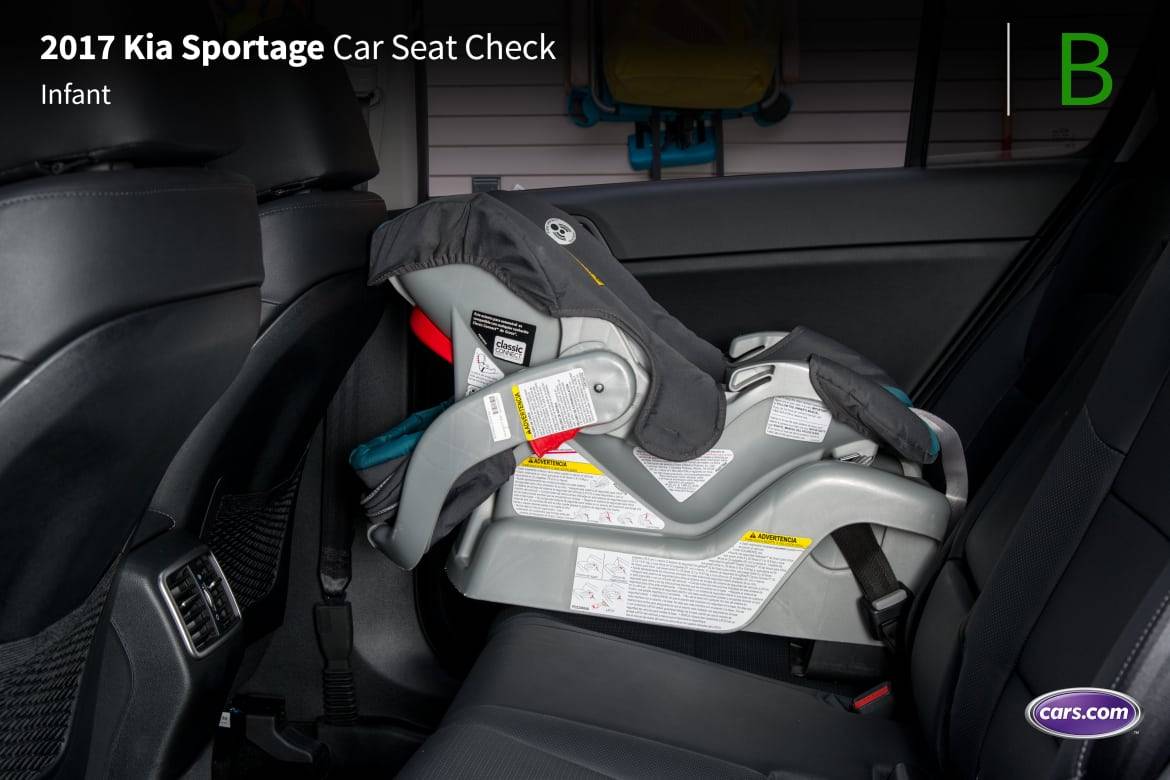
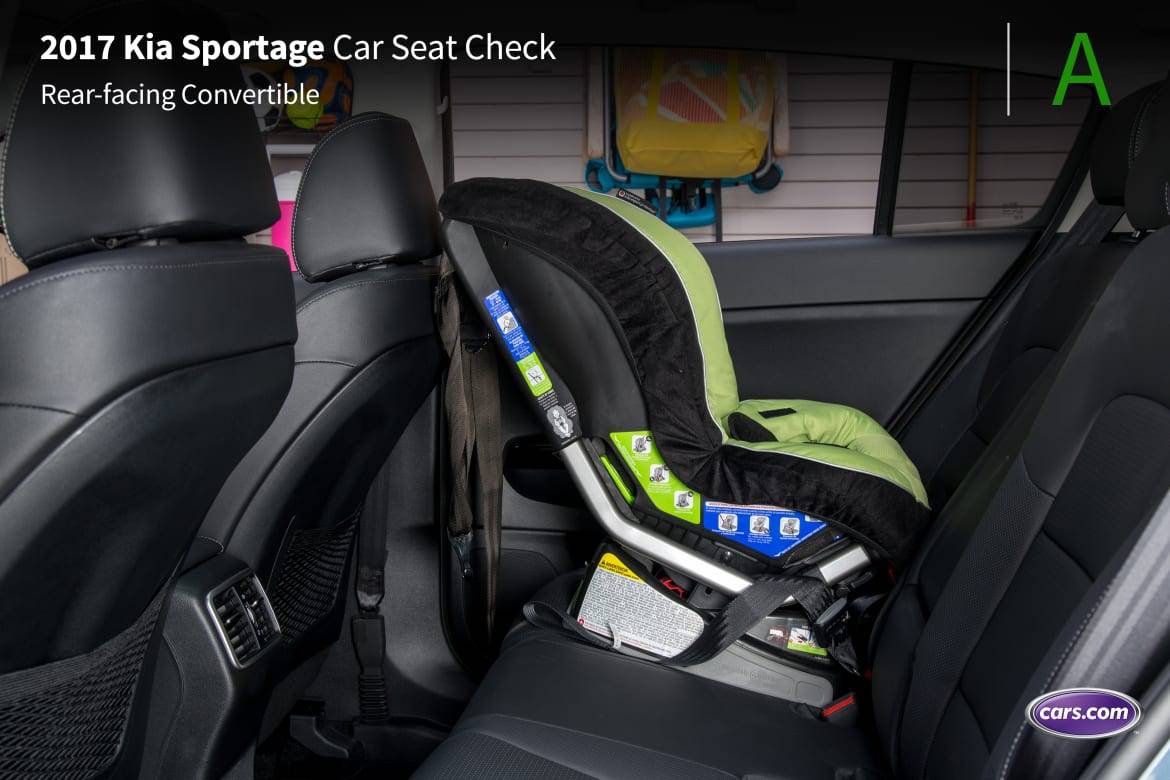

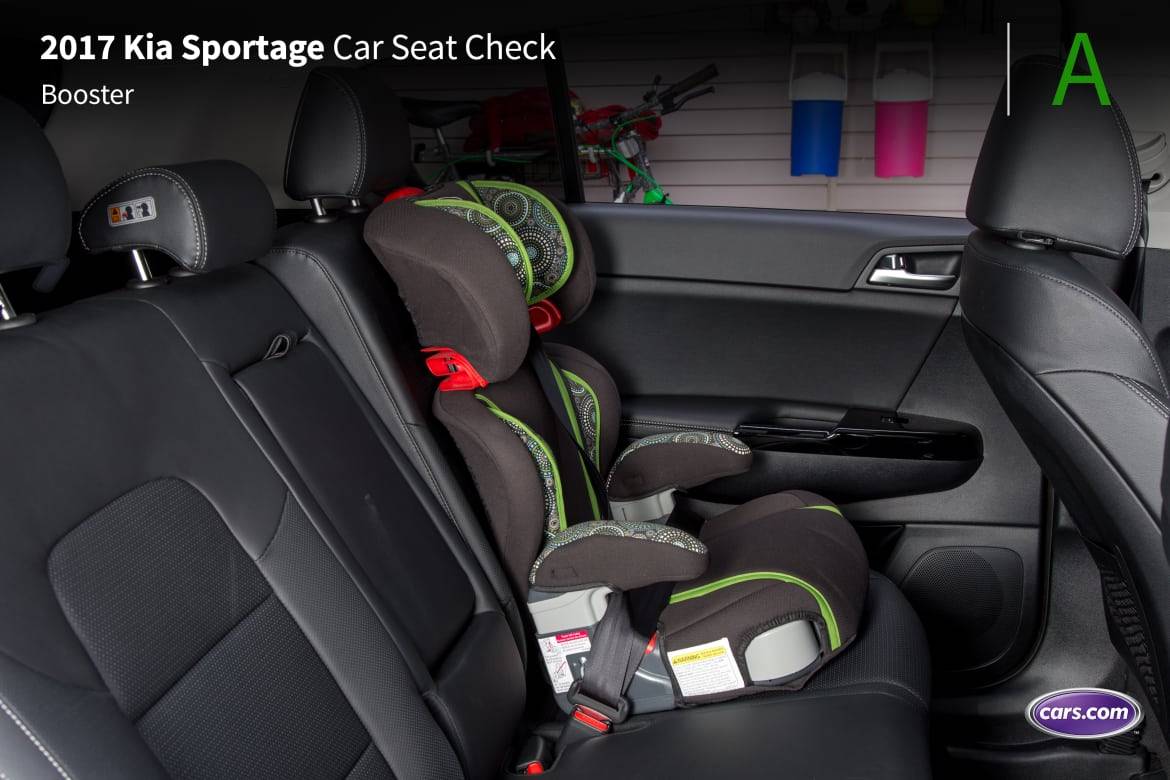







Grading Scale
A: Plenty of room for the car seat and the child; doesn’t impact driver or front-passenger legroom. Easy to find and connect to Latch and tether anchors. No fit issues involving head restraint or seat contouring. Easy access to the third row.
B: Plenty of room. One fit or connection issue. Some problems accessing third row when available.
C: Marginal room. Two fit or connection issues. Difficult to access third row when available.
D: Insufficient room. Two or more fit or connection issues.
F: Does not fit or is unsafe.
About Cars.com’s Car Seat Checks
Editors Jennifer Geiger, Jennifer Newman and Matt Schmitz are certified child safety seat installation technicians.
For the Car Seat Check, we use a Graco SnugRide Classic Connect 30 infant-safety seat, a Britax Marathon convertible seat and Graco TurboBooster seat. The front seats are adjusted for a 6-foot driver and a shorter passenger. The three child seats are installed in the second row. The booster seat sits behind the driver’s seat, and the infant and convertible seats are installed behind the front passenger seat.
We also install the forward-facing convertible in the second row’s middle seat with the booster and infant seat in the outboard seats to see if three car seats will fit; a child sitting in the booster seat must be able to reach the seat belt buckle. If there’s a third row, we install the booster seat and a forward-facing convertible. To learn more about how we conduct our Car Seat Checks, go here.
Parents should also remember that they can use the Latch system or a seat belt to install a car seat, and that Latch anchors have a weight limit of 65 pounds, including the weight of the child and the weight of the seat itself.

News Editor Jennifer Geiger joined the automotive industry in 2003, much to the delight of her Corvette-obsessed dad. Jennifer is an expert reviewer, certified car-seat technician and mom of three. She wears a lot of hats — many of them while driving a minivan.
Featured stories










